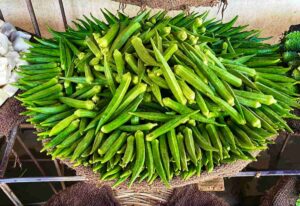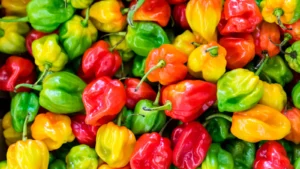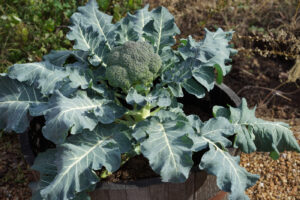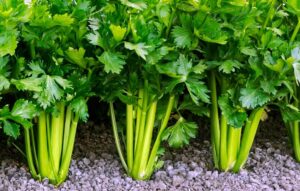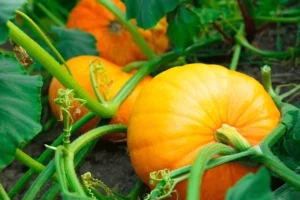How to Grow Banana Squash: A Complete Guide
Banana squash, with its elongated shape and sweet, nutty flavor, is a versatile winter squash that deserves a place in your garden. Whether you’re looking to grow this nutritious vegetable in your backyard garden, in containers, or even indoors, this comprehensive guide will walk you through everything you need to know about successfully cultivating banana squash.
What is Banana Squash?
Banana squash (Cucurbita maxima) is a winter squash variety that gets its name from its elongated, banana-like shape. These impressive squashes can grow up to 2-3 feet in length and weigh between 10-40 pounds when fully mature. Their outer skin ranges from pink-orange to blue-gray, while the inside reveals a firm, orange flesh that’s rich in flavor and nutrients.
According to the USDA Agricultural Research Service, winter squashes like banana squash are excellent sources of vitamins A and C, potassium, and dietary fiber, making them nutritious additions to your diet.
Growing Conditions for Banana Squash
Before diving into planting methods, it’s important to understand the optimal conditions for growing banana squash:

Climate and Growing Season
Banana squash thrives in warm weather and requires a long growing season of 110-120 days to reach maturity. You’ll want to plant after all danger of frost has passed, when soil temperatures reach at least 60°F (15.5°C).
Soil Requirements
For healthy banana squash plants, your soil should have:
- pH level between 6.0-6.8 (slightly acidic)
- Good drainage capabilities
- Rich organic matter content
- Consistent moisture retention
Sunlight Needs
These plants require full sun exposure—at least 6-8 hours of direct sunlight daily for optimal growth and fruit development.
How to Grow Banana Squash from Seed
Growing banana squash from seed is rewarding and economical. Here’s a step-by-step approach:
Starting Seeds Indoors
If you live in a region with a shorter growing season, starting seeds indoors gives your plants a head start:
- Timing: Begin seeds indoors 3-4 weeks before your last expected frost date.
- Containers: Use biodegradable pots (3-4 inches) that can be planted directly into the garden to minimize root disturbance.
- Planting depth: Sow seeds ½ inch deep, with 2-3 seeds per pot.
- Temperature: Maintain soil temperature between 70-85°F (21-29°C) for optimal germination.
- Germination: Expect seedlings to emerge within 7-10 days.
- Thinning: Once seedlings develop their first true leaves, thin to the strongest plant per pot.
- Hardening off: One week before transplanting, gradually acclimate seedlings to outdoor conditions.
Direct Sowing in the Garden
In warmer climates with longer growing seasons, direct sowing is a viable option:
- Timing: Wait until soil temperatures reach at least 60°F (15.5°C) and all danger of frost has passed.
- Preparation: Prepare soil by incorporating compost or aged manure.
- Planting method: Create mounds 8-10 inches high and 2-3 feet in diameter, spaced 6-8 feet apart.
- Sowing: Plant 4-5 seeds per mound, ½ inch deep, and space them evenly.
- Thinning: When seedlings reach 2-3 inches in height, thin to the 2-3 strongest plants per mound.
Growing Banana Squash in Container Gardens
Despite their large fruit size, banana squash can be grown in containers with proper planning:
Container Selection
Choose containers that are:
- At least 20-24 inches in diameter and 12-15 inches deep
- Equipped with adequate drainage holes
- Made of durable material that can support a large plant
Potting Medium
Create a nutrient-rich growing medium by mixing:
- 60% high-quality potting soil
- 20% compost
- 10% perlite or vermiculite for drainage
- 10% well-decomposed manure
Supporting Container-Grown Plants
Since banana squash produces large vines that can spread 10-15 feet:
- Install a sturdy trellis system at planting time
- Guide young vines onto the support structure
- Use soft plant ties or strips of cloth to secure vines
- Provide support for developing fruits using slings made from old t-shirts or nylon stockings
Container Care Tips
- Water more frequently than in-ground plants, potentially daily during hot weather
- Apply balanced liquid fertilizer every 2-3 weeks
- Place containers where they receive maximum sunlight
- Rotate containers periodically if sunlight is uneven
Growing Banana Squash Indoors
While challenging due to their space requirements, growing banana squash indoors is possible with these considerations:
Indoor Requirements
To successfully grow banana squash indoors, you’ll need:
- A very sunny south-facing window or grow lights providing 10-12 hours of light daily
- Temperatures consistently between 70-85°F (21-29°C)
- Adequate space for vining growth (or willingness to prune)
- A pollination strategy (hand pollination)
Indoor Planting Process
- Select a compact banana squash variety if possible
- Use a large container (minimum 24 inches in diameter)
- Ensure excellent drainage
- Position near your brightest window or under grow lights
- Install a small trellis or other support structure
Hand Pollination for Indoor Plants
Since indoor plants lack natural pollinators:
- Identify male flowers (long, thin stems) and female flowers (with tiny squash forming at the base)
- In the morning when flowers open, use a small paintbrush to collect pollen from male flowers
- Gently transfer pollen to the center of female flowers
- Repeat with several male flowers to ensure thorough pollination
Banana Squash Variety Comparison
| Variety | Days to Maturity | Size | Color | Special Characteristics | Best Uses |
|---|---|---|---|---|---|
| Pink Banana | 105-110 days | 18-24″ long, 10-15 lbs | Pink-orange exterior, orange flesh | Sweet flavor, excellent storage | Baking, soups, purées |
| Blue Banana | 110-120 days | 24-36″ long, 15-30 lbs | Blue-gray exterior, orange flesh | Richly flavored, high yield | Roasting, pies, freezing |
| Rainbow Banana | 100-110 days | 18-24″ long, 10-20 lbs | Multicolored exterior, yellow-orange flesh | Decorative, unique appearance | Roasting, stuffing, mashing |
| Golden Banana | 100-105 days | 16-20″ long, 8-12 lbs | Golden yellow exterior and flesh | Earlier maturity, smaller size | Container growing, baby food |
| Sibley (Pike’s Peak) | 100-110 days | 12-14″ long, 8-10 lbs | Slate gray exterior, orange flesh | Tear-drop shape, sweet flavor | Baking, purées, freezing |
Common Challenges and Solutions
Pest Management
Banana squash can face several common pests:
Squash Bugs
- Identification: Shield-shaped brown insects that suck plant juices
- Prevention: Use row covers until flowering; maintain garden cleanliness
- Treatment: Hand-pick and destroy; insecticidal soap for nymphs
Cucumber Beetles
- Identification: Yellow beetles with black spots or stripes
- Prevention: Floating row covers; companion planting with radishes
- Treatment: Organic pyrethrin-based insecticides when necessary
Squash Vine Borers
- Identification: Moths that lay eggs at plant base; larvae bore into stems
- Prevention: Wrap stems with aluminum foil at soil level
- Treatment: Carefully cut stems lengthwise to remove larvae; cover damaged section with soil
Disease Prevention
Common diseases affecting banana squash include:
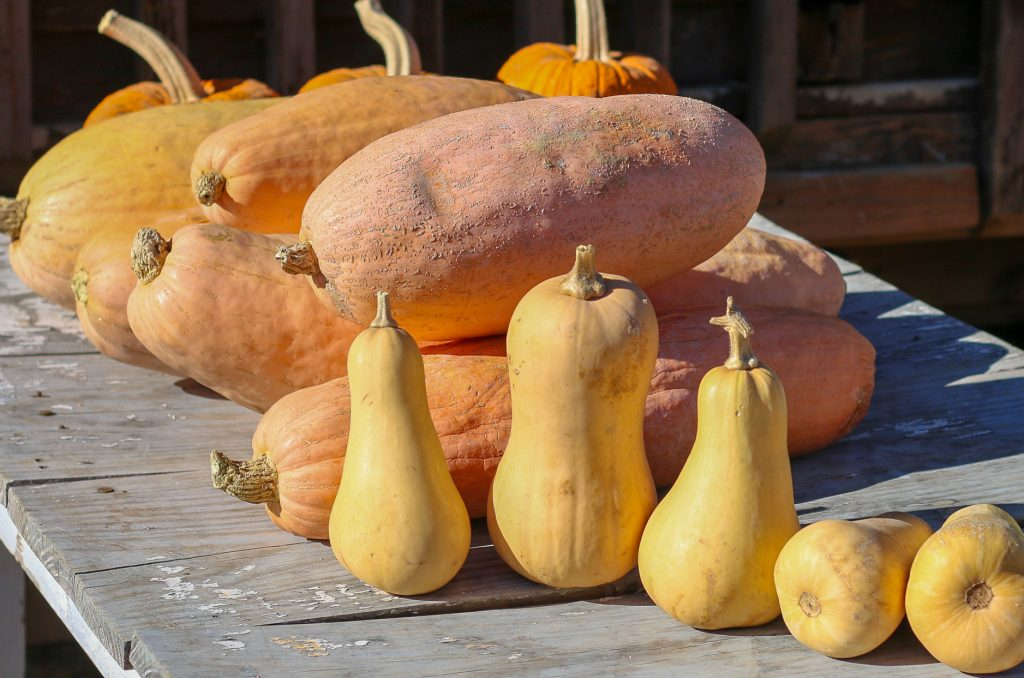
Powdery Mildew
- Prevention: Provide good air circulation; water at base of plants
- Treatment: Spray with a solution of 1 tablespoon baking soda, 1 teaspoon mild liquid soap, and 1 gallon of water
Bacterial Wilt
- Prevention: Control cucumber beetles (disease vectors); practice crop rotation
- Management: Remove and destroy infected plants immediately
Downy Mildew
- Prevention: Avoid overhead watering; ensure proper spacing
- Treatment: Copper-based fungicides applied early in the infection
Harvesting and Storing Banana Squash
When to Harvest
Banana squash is ready to harvest when:
- The rind has hardened and cannot be easily pierced with a fingernail
- The stem begins to dry and cork over
- The squash has reached its mature color (varies by variety)
- Usually 110-120 days after planting
Harvesting Method
- Use sharp, clean pruners or a knife to cut the stem, leaving 2-3 inches attached
- Never lift squash by the stem—it may break off, leading to rot
- Handle gently to avoid bruising
- Allow freshly harvested squash to cure in a warm, dry location for 1-2 weeks
Storage Techniques
Properly cured banana squash can last 4-6 months when stored:
- In a cool (50-55°F/10-13°C), dry place with good ventilation
- On shelves or racks where they don’t touch each other
- Away from apples, pears, or other ethylene-producing fruits
- With regular checks for signs of softening or rot
Using Banana Squash in the Kitchen
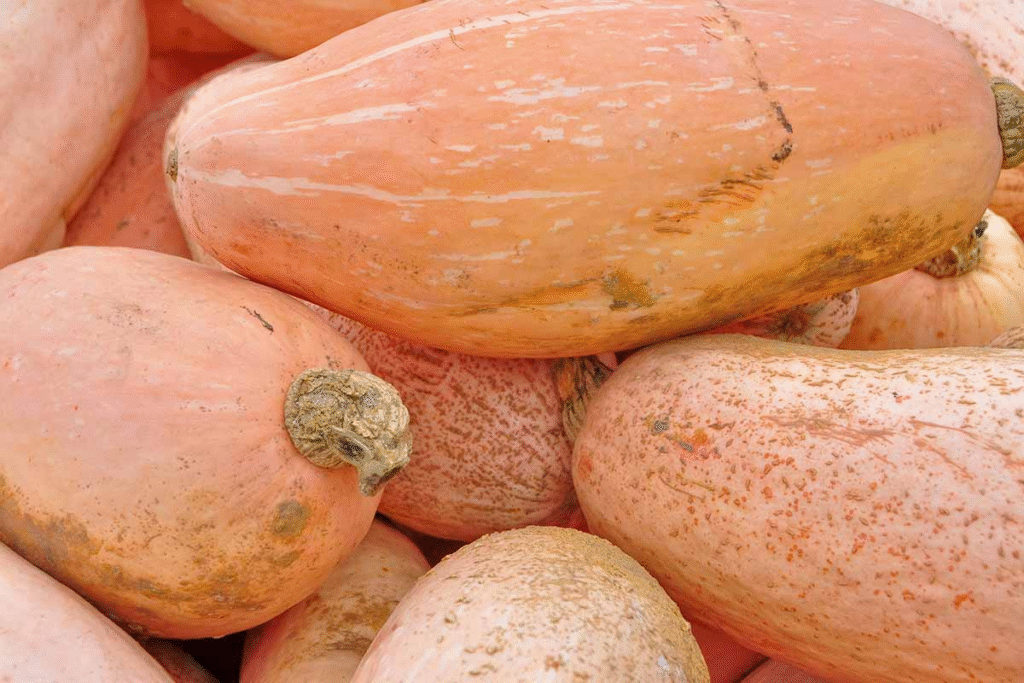
Preparation Methods
Banana squash’s size often means you’ll use portions rather than the whole squash at once:
- Wash the exterior thoroughly
- Cut off a section of the desired size
- Halve the section and scoop out seeds
- Cover unused portion with plastic wrap and refrigerate for up to a week
Cooking Techniques
Banana squash’s versatility shines with these cooking methods:
- Roasting: Cut into cubes, toss with olive oil, salt, and herbs, then roast at 400°F until caramelized
- Steaming: Steam chunks until tender for a lower-calorie option
- Pureeing: Cook and blend for soups, sauces, or as a base for baked goods
- Stuffing: Halve, scoop, fill with a grain-protein mixture, and bake until tender
Conclusion
Growing banana squash offers both gardening satisfaction and culinary rewards. With their impressive size, nutritional benefits, and delicious flavor, these squashes make a wonderful addition to your garden—whether in the ground, in containers, or even indoors. By following the guidance in this article, you’ll be well-equipped to grow, harvest, store, and enjoy these magnificent vegetables throughout the season and beyond.
Remember that your local county extension office can provide region-specific advice for growing banana squash in your area. The USDA Cooperative Extension System offers valuable resources to help you become a successful squash grower.

